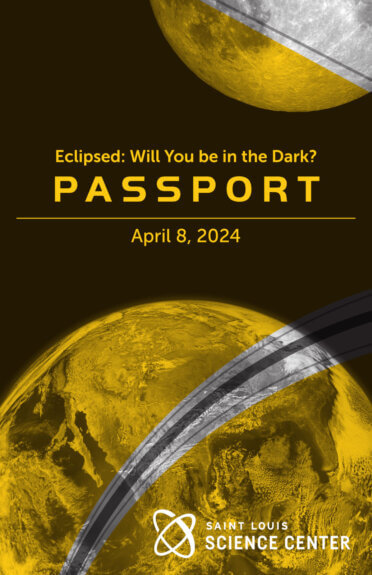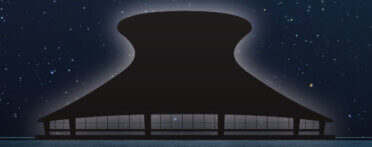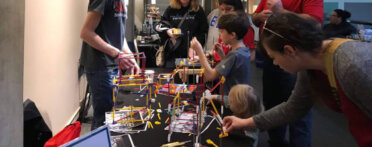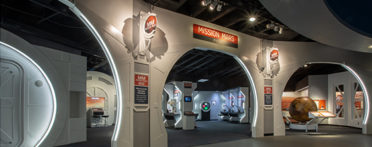Eclipse 2024
Are you ready to get eclipsed?
About
Eclipses are awe-inspiring events that involve the two largest objects in our sky – the sun and moon.
On April 8, 2024, a total solar eclipse will cross North America, passing over Mexico, the United States, and Canada. Totality of this eclipse can be viewed in our region by traveling to southern Missouri and Illinois.
On October 14, 2023, an annular solar eclipse crossed North, Central, and South America. If not for the clouds that day, this eclipse would have been visible in St. Louis as a partial solar eclipse.
Can’t make it to totality?
Want to enjoy the eclipse and some activities at the Saint Louis Science Center? Here’s what you can expect on April 8!
- Live streaming of total eclipse across United States (expected from noon-3 pm). Feed will be shared throughout the building, including inside the James S. McDonnell Planetarium.
- Get creative in our Makerspace Gallery and create your very own eclipse glasses case. The Makerspace Gallery is located on the 2nd Floor.
- Partial viewing opportunities outside the Planetarium and in the GROW gallery. Guests must wear eclipse glasses to view.


Limited-edition Saint Louis Science Center Pins will be available for a $1 donation at the Box Office!
Watch it with us!
Can’t make it to totality? Can’t make it to the Saint Louis Science Center? Is it cloudy? Watch the eclipse as it happens with NASA TV! The total solar eclipse will move across North America on April 8, 2024, traveling through Mexico, across the United States from Texas to Maine, and out across Canada’s Atlantic coast. Watch the 2024 eclipse through the eyes of NASA, the official broadcast!
From 12 to 3 p.m. CDT (1700 to 2000 UTC) on April 8, NASA will share conversations with experts and provide telescope views of the eclipse from several sites along the eclipse path.
2024 Eclipse Passport
On April 8, 2024 the last total solar eclipse visible in the United States for over 21 years will pass south of St. Louis over southern Missouri and Illinois.
Use your passport to learn some quick facts, myths, and historic events connected to eclipses, to uncover why this event is so important.
Pick up safety tips for safe solar observation.
Become a citizen scientist by documenting your firsthand experiences during the eclipse.
Download your 2024 Eclipse Passport and assemble it at home for this special astronomical event!
How can you safely view solar eclipses?
Local Eclipse News
April’s solar eclipse brings totality back to Missouri, Illinois
“There are places where you can go hundreds of years without being near the path of totality,” Will Snyder, manager of the James S. McDonnell Planetarium at the Saint Louis Science Center, said. “And for the St. Louis area to have back-to-back eclipses like this, it’s a really great opportunity.”
Will says the thrill of a total solar eclipse is not to be missed.
St. Louis Planetarium helps public prepare for upcoming total solar eclipse
“Just understanding how the moon orbits the earth, maybe why we don’t always have an eclipse every month as the moon orbits the planet,” Snyder explained. “For the people who want to go deeper, you can learn about the Soros, those complex issues. It’s a great gateway to a lot of cool things in science.”
Along with information, there are actually safety steps people need to take if they plan on watching the spectacle. Mainly acquiring the special glasses and knowing the best way to put them on and take them off.
Total Solar Eclipse
Monday, April 8, 2024

What is a total solar eclipse?
A total solar eclipse occurs when the moon completely blocks out the face of the sun during the day. The sky darkens as if it were dawn or dusk, and you are able to view spectacular sights like the solar corona.
Where can I experience totality?
What will you see in St. Louis on April 8th?
The St. Louis area will experience a partial solar eclipse. At maximum eclipse, approximately 99% of the sun will be blocked by the moon.
Even with 99% of the sun’s light blocked, it is still unsafe to look directly at the sun without protection.
Eclipse Start: 12:42 PM CDT
Maximum Eclipse: 2:00 PM CDT
Eclipse End: 3:17 PM CDT
Duration of Eclipse: 2 hours, 34 minutes
Travel to locations in the path of totality if at all possible!
Solar Eclipse Glasses
Except during the brief total phase of a total solar eclipse, it is not safe to look directly at the sun without specialized eye protection for solar viewing.
Viewing any part of the sun through a camera lens, binoculars, or a telescope without a special-purpose solar filter secured over the front of the optics can instantly cause severe eye injury.

More Eclipse Resources
Are My Eclipse Glasses Safe?
Learn MoreThe American Astronomical Society (AAS) is a trusted authority for ensuring your solar glasses are safe for looking directly at the sun.
Interactive 2024 Eclipse Map
Browse NowLocation, location, location! Make sure you are in the path of totality on April 8th using this map.
NASA Activities
Hands On FunLearn more about eclipses with hands-on and virtual activities for the whole family.
Science of Eclipses
Go DeeperEclipses aren’t just beautiful – they’re great for science.
Citizen Science
Sign Up HereExplore citizen science projects, where scientists and members of the public, known as citizen scientists, collaborate on exciting research.
Future Eclipses
Plan AheadPlan ahead for more eclipses over the next few years!

Visit
Membership does more.
As a nonprofit, the Saint Louis Science Center relies on memberships, donations and ticket sales to support free exhibits like the Planetarium, our education programs, community outreach and daily operation.
If you’d like to support the Science Center’s mission, learn more about membership, make a one-time gift in support of the Science Center, or get tickets to see a show.
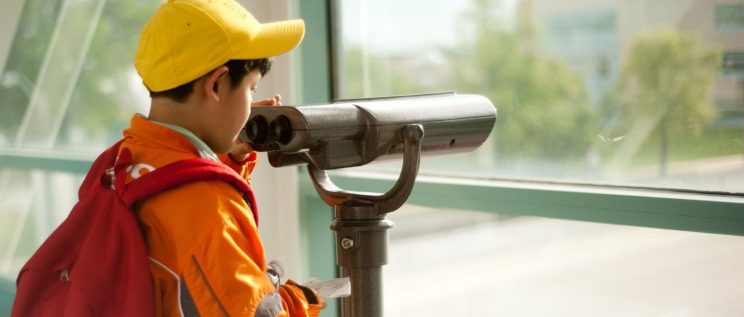
Accessibility
The Planetarium is accessible to visitors with disabilities, as well as visitors with strollers, scooters, and walkers. Elevators and ramps serve all public areas.








